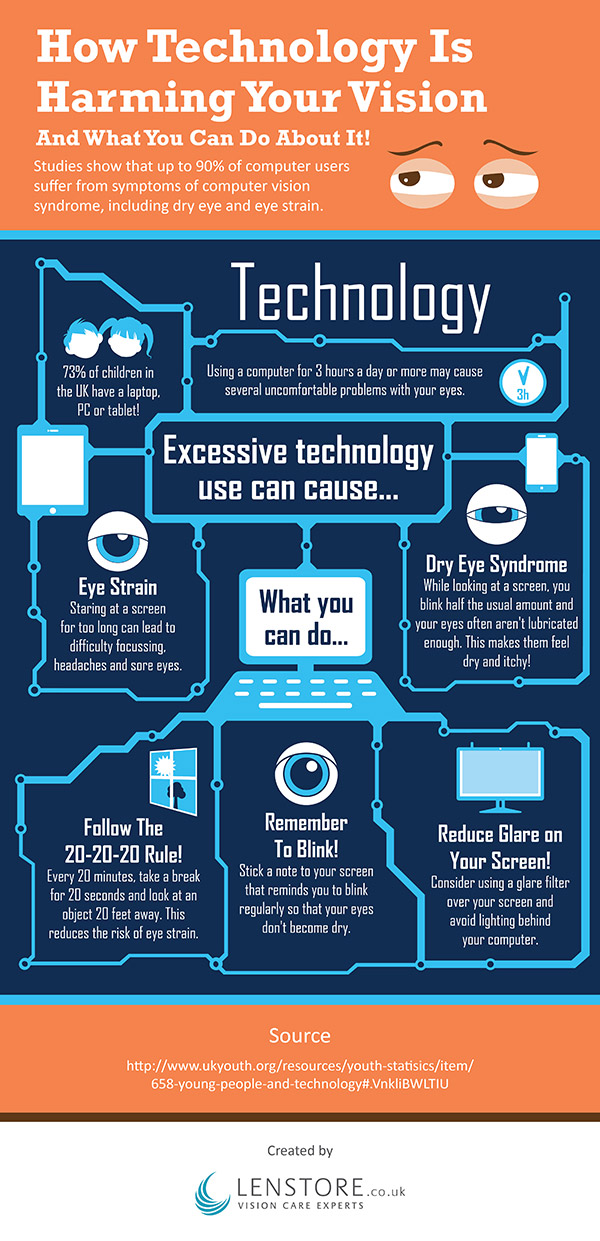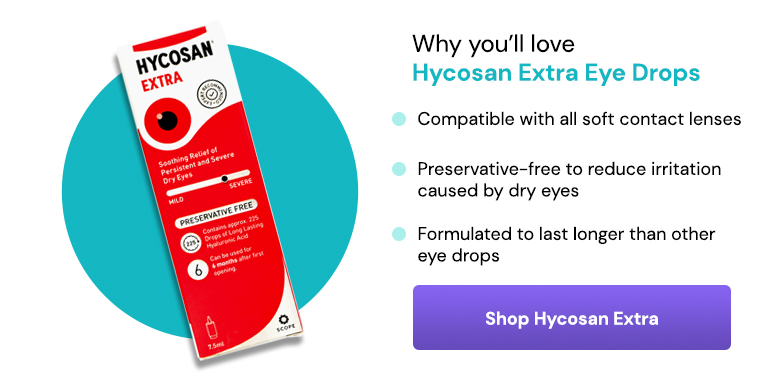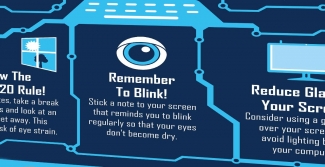Is technology harming your vision?
Studies have revealed that nearly 60% of Americans use digital devices for at least five hours per day. In general, many activities and hobbies are moving to the online world and each generation has their own distinct habits.
No matter who is using these digital devices, the increasing and continuous exposure to the blue light that is released from backlit displays may harm your retinal cells. This, in turn, may initiate and accelerate the development of vision problems such as age-related macular degeneration and cataracts.
So, if you regularly use a computer, phone or tablet for over three hours a day, then you are at an increased risk of Computer Vision Syndrome. Although not as serious as some of the long term effects of blue light exposure the symptoms of Computer Vision Syndrome are commonly aggravated by environmental conditions, such as air conditioning, bright overhead lighting or screen glare.

What are the symptoms of computer vision syndrome?
Computer Vision Syndrome encompasses a variety of symptoms that can vary in severity. These symptoms may include:
- Dry eye - Staring at a screen for lengthy periods of time can cause your eyes to not produce enough tears, or evaporate too quickly. This may result in your eyes become dried out, irritated and inflamed.
- Eye strain - Reading off a computer screen for a long time can be hard work for your eye muscles. Unlike a book, a screen has the issue of glare, flicker and constantly changing imagery for your brain to interpret. Studies have found that more than 9 out of 10 people who suffer from digital eye strain are guilty of using their digital devices for at least two hours a day.
- Headaches - As a result of eye strain, you may also experience headaches. These typically occur a few hours after your eye strain emerges, and can come in different forms of intensity.
Less common symptoms of Computer Vision Syndrome may include spells of dizziness, difficulty refocusing, double vision and fatigue. If you regularly experience one of more of these symptoms, you should visit an eye care professional for a diagnosis and to discuss potential lifestyle changes that may alleviate your condition.

How can you avoid harming your vision?
There are a number of steps that can be taken to reduce the likelihood of developing the symptoms of Computer Vision Syndrome. The simplest is to reduce the amount of time you spend in front of a computer. Unfortunately, that is not a plausible solution for many regular computer users.
Dry eye is prevalent among regular computer users, due to the tendency to blink less often while looking at a screen. To help remind you, try sticking a note to or near your monitor, reminding you to blink regularly.
Glare on your screen may mean your eyes have to work harder than they need to. If possible, move your screen so that there isn't a bright light source behind you. In addition, you may consider using a glare filter over your monitor to reduce it even further.
Special eyewear is also available for computer users that successfully block out blue light caused by the screens of your technological devices. This is great if you tend to use LED screens before bed, because it will decrease alertness brought on by blue light and therefore prevent a poor night's sleep.








